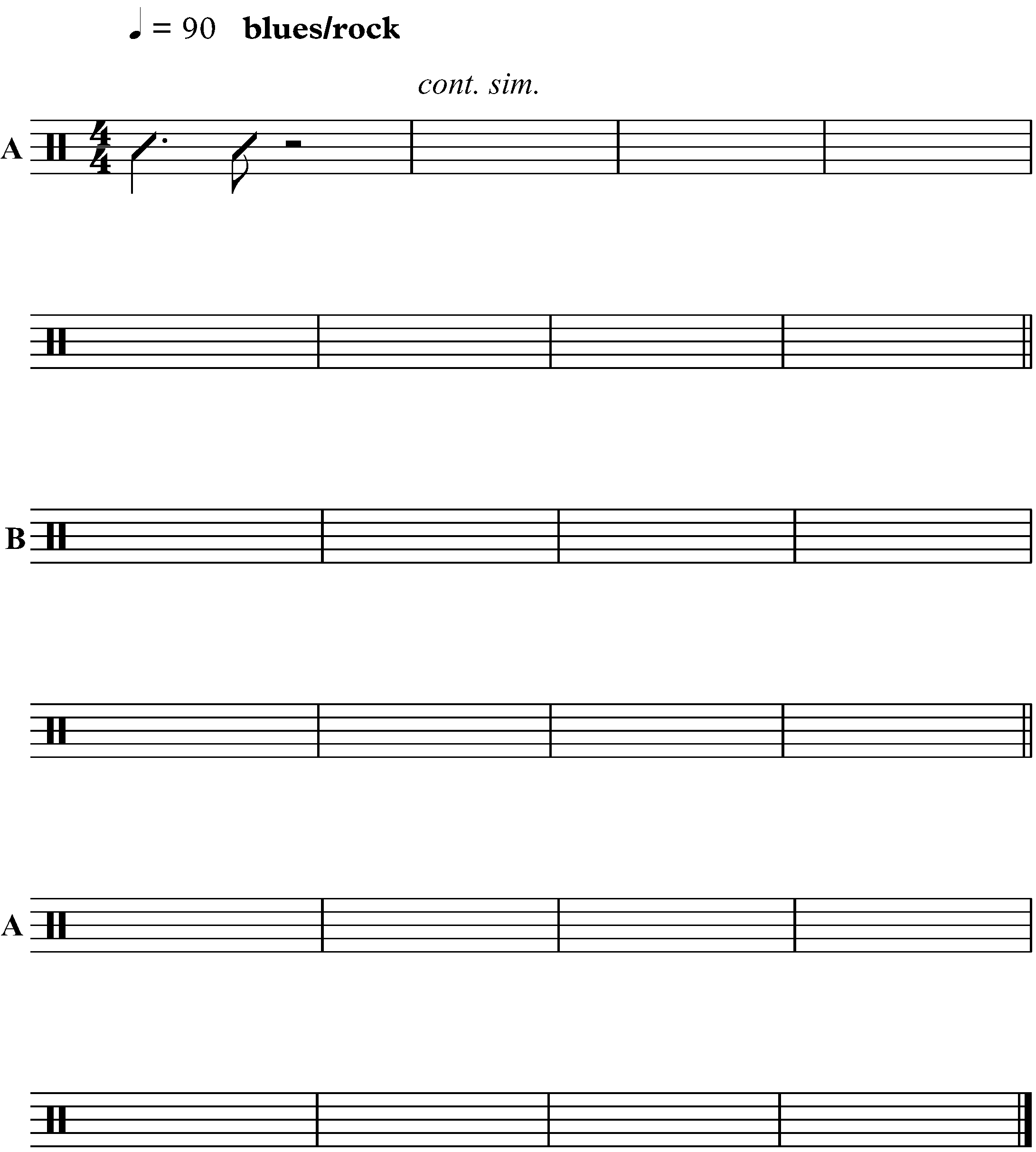Before starting this lesson I advise you read our Introduction To Improvisation and Your First Improvisation lessons first. You will also need a copy of This Free MP3 that is used as a backing track for this lesson.
Note: The backing track starts with a four beat count in.
In this improvisation lesson you will be taking a bit of a different approach. First of all the piece is much longer than in our previous lessons and this time it is built of two larger structural sections. This isn't technically something you will come across in an exam but it is going to be quite useful as an exercise in taking a short part and varying it over several repetitions. Rather than giving you any set parts to play for this piece, I will be discussing ideas for constructing your own part using existing lessons on the site. The main aim of this lesson is to get you to create something yourself.
Each section of the piece is eight bars long so you have several options for how you construct your part. Below is a list of links to lessons on sectional structure, any of which would work in this case.
- Two Bar 'A B' Pattern - Eight of these would fill each section.
- Four Bar 'A A A B' Pattern - Two of these would fill each section.
- Four Bar 'A B A C' Pattern - Two of these would fill each section.
- Eight Bar 'A A A B' Pattern - One of these would be a seciton of the piece.
- Eight Bar Pattern Built Of Three Different Parts - One of these would be a seciton of the piece.
You can make up on the fly which of these structures you will play or you can pick before you start playing, either way is fine but try to have some kind of pattern in your head whilst playing as this will make your parts fit far more nicely. The list above doesn't represent all your options, just those covered so far in level 1.
Below I have given a 'skeleton score' for this piece. Notice in the first bar that the main rhythm the guitars and bass are playing has been included. You will also notice that down the left hand margin Structure Markings have been included.

Now you know the structure of the piece it would be a good idea to pick your grooves. If you listen to the backing track you may notice that there is a very strong rhythm being played on the guitars and bass. You could choose to get in on this and copy that rhythm with your kick and snares or you could choose to play something a little more straight to highlight the off beats. You could even play one idea for one section then switch for the second. Either way, be deliberate with your grooves. If you were wanting to copy that rhythm This Is The Groove you are after.
There are also many options for the right hand part. The easiest option is to play straight eighths or quarters, as discussed in all of our Level 0 Groove Lessons. It should be noted that just because this is the easiest option, it doesn't mean it's a cop out to use it. The sound and feel of those note values may really work for the piece. You could also use Offbeat 8th Notes as open or closed hi hats or on another cymbal. You could throw in some accents, for example Accenting Quarter Notes. You could construct your pattern around a Two Bar Groove, throw in some Open Hi Hats and you could even play around with using Half or Double time grooves. Then there is the more obvious option of moving around different parts of the kit with the right hand.
Two things to think about when constructing your groove part. First of all try to make your part genre appropriate. This piece specifies that it has a blues/rock feel, so think about what makes a blues or rock groove. Secondly, the skeleton score indicates that there are two distinct sections in the piece so when you switch to the B section try and mix up the groove a little. This can just be a simply move of the right hand or something a bit more complex. When you go back to the A section towards the end of the piece, try to make this part as similar as possible to the first occurance of the A.
In terms of fill constuction, as long as you place your fills in an appropriate manner and can play them without breaks in the timing you can't really go wrong. Many options for fill construction are listed in level 0 and level 1 so have a look through. One thing it is easy to forget is that your fill doesn't have to be a full bar. Half, quarter, three quarers and one beat fills can all be really affective.
TASK
- Create your own part for the improvisation exercise presented at the start of this lesson.
- Play your part to the backing track and see if you think it fits well.
- Try transcribing a part for this piece. This isn't essential but is a great way to improve your knowledge of drum kit music.
- Think about different ways you could approach this exercise.

